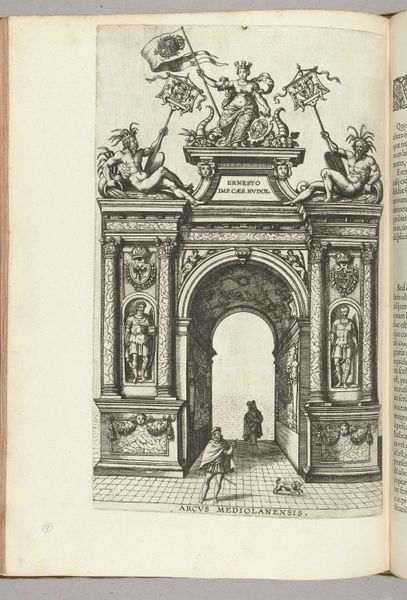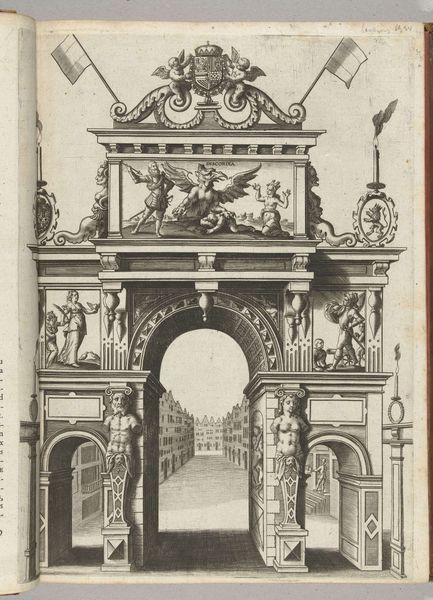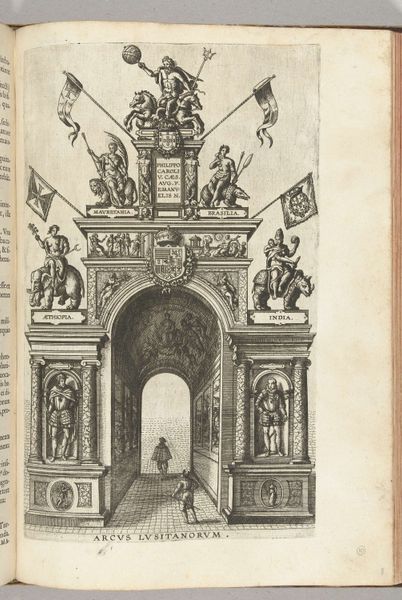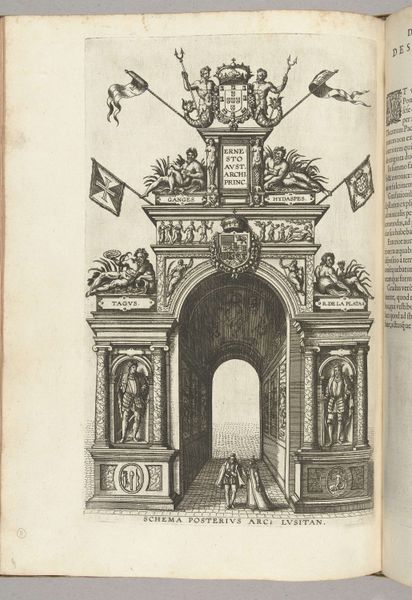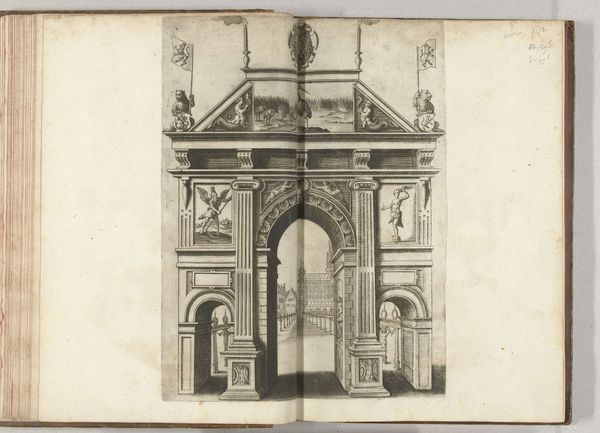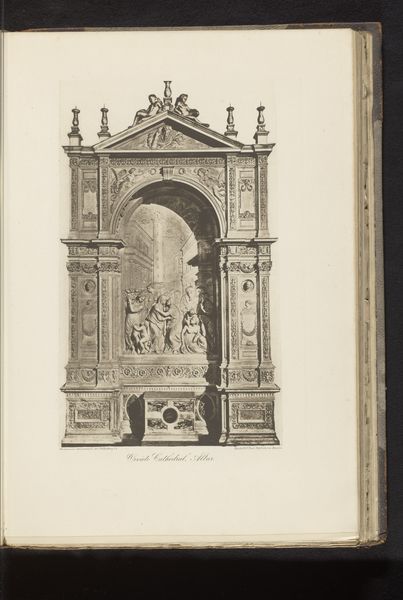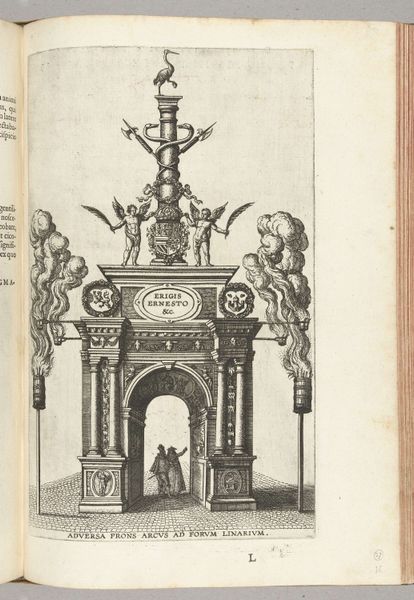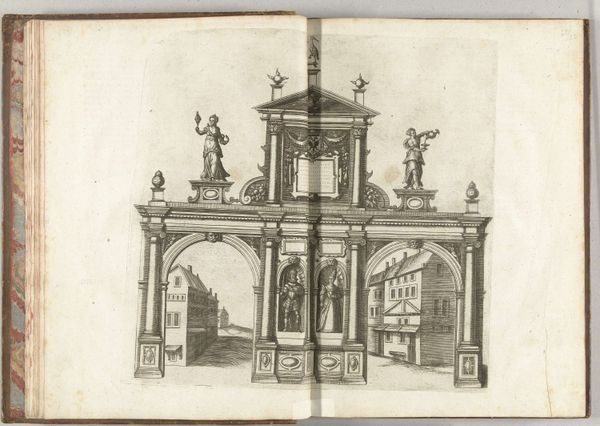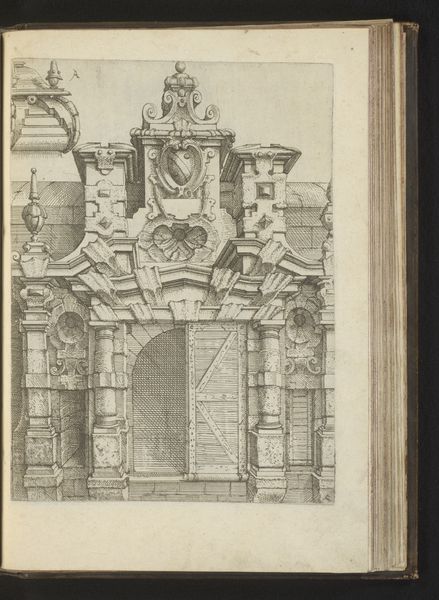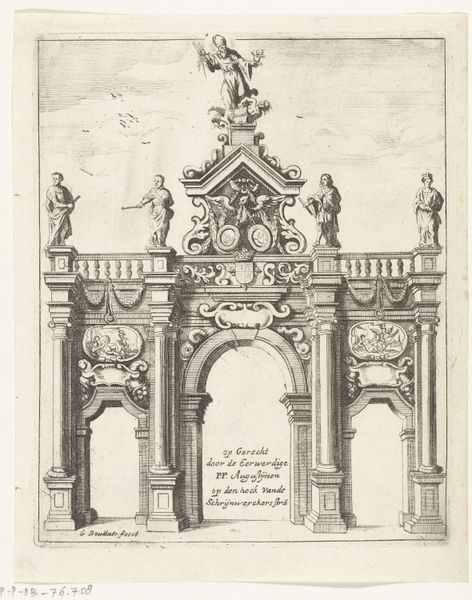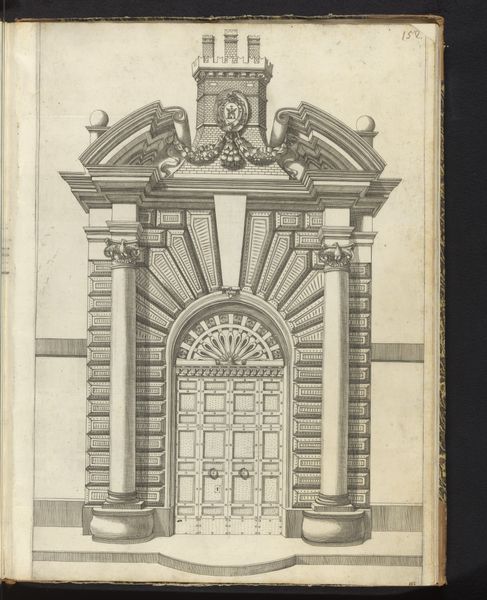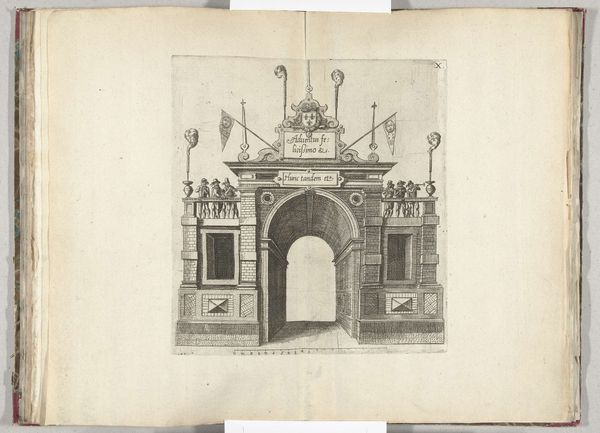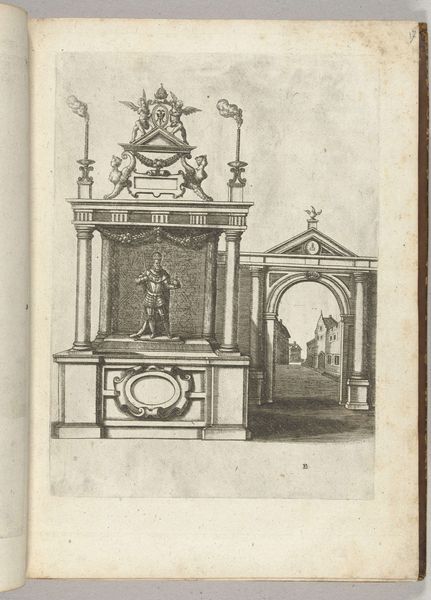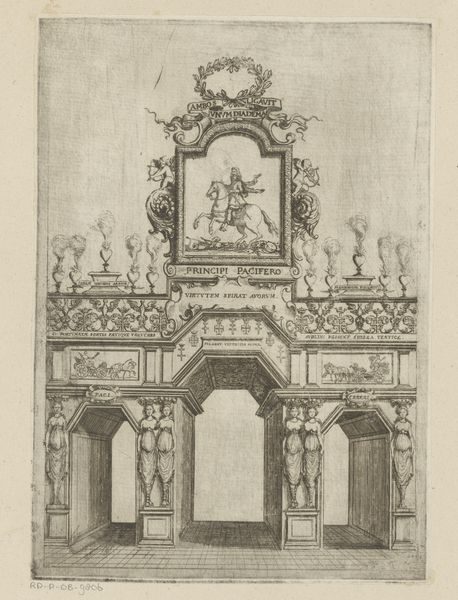
drawing, print, engraving, architecture
#
drawing
# print
#
coloured pencil
#
geometric
#
line
#
italian-renaissance
#
engraving
#
architecture
Dimensions: height 325 mm, width 200 mm
Copyright: Rijks Museum: Open Domain
Editor: Here we have Pieter van der Borcht the First's "Triomfboog van Florence (achterzijde)", created between 1594 and 1595. It’s an engraving with colored pencil showing the rear side of a Triumphal Arch. It feels so meticulously rendered, but also... distant. What can you tell me about it? Curator: What strikes me immediately is its context. Consider, for instance, that triumphal arches weren't just architectural feats. They were potent political statements. In 1594 Florence, power struggles were constant. How does this image reflect or challenge the existing power structures, do you think? Editor: Well, it's commissioned, right? Wouldn’t that automatically mean it's supporting the establishment? Curator: Not necessarily. Art can subvert even within commission. Look closely at the figures depicted – who is represented, and who is conspicuously absent? How does the arch, typically a symbol of military victory and imperial power, interact with the daily life suggested by the figures passing beneath it? Consider, too, that an image itself holds power. Whose story does this print allow to be told and circulate? Editor: So you're saying that even in what looks like a straightforward architectural rendering, there can be commentary on social and political dynamics? The very act of choosing what to depict is a political act? Curator: Precisely. Think about the act of replication through printmaking and what it meant for disseminating certain viewpoints about civic identity. The work encourages us to examine what is glorified versus what is ignored in Renaissance society and how it all echoes to this day. Editor: That makes me look at it totally differently. It's not just about the arch itself but about who it serves, who it represents. Curator: Exactly! Considering how spaces shape interactions and perpetuate cultural narratives, this arch—even in print—becomes an important piece of socio-political history. Editor: This has really opened my eyes. Thank you.
Comments
No comments
Be the first to comment and join the conversation on the ultimate creative platform.
